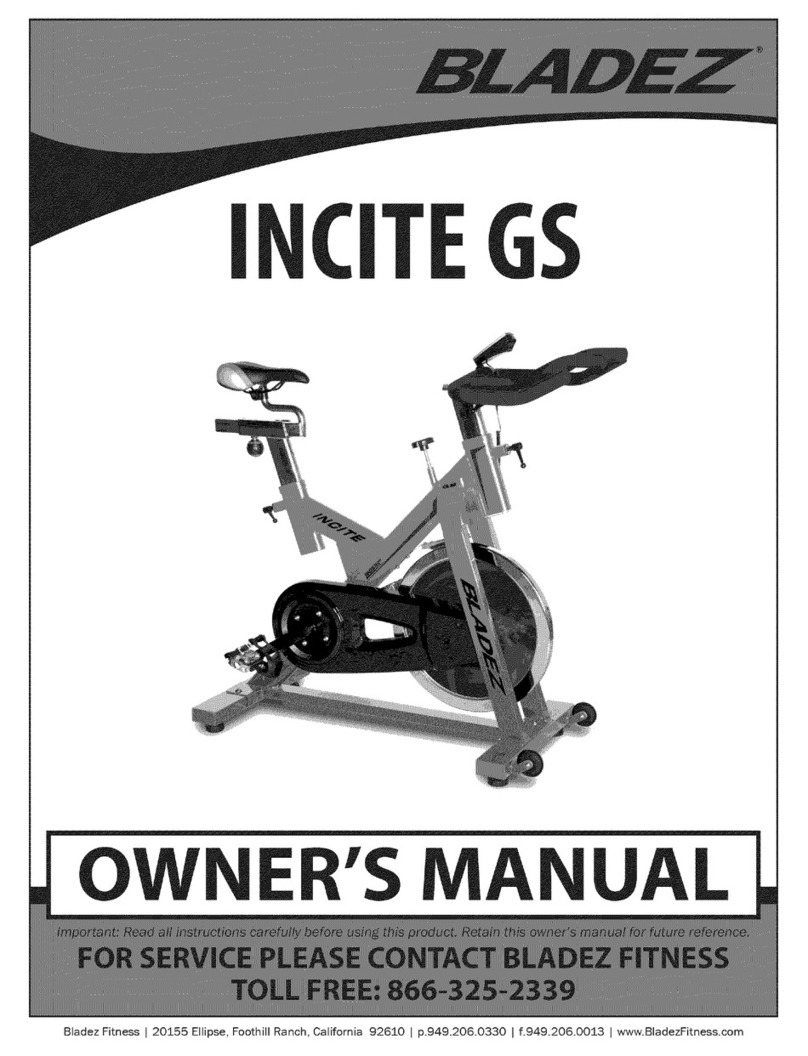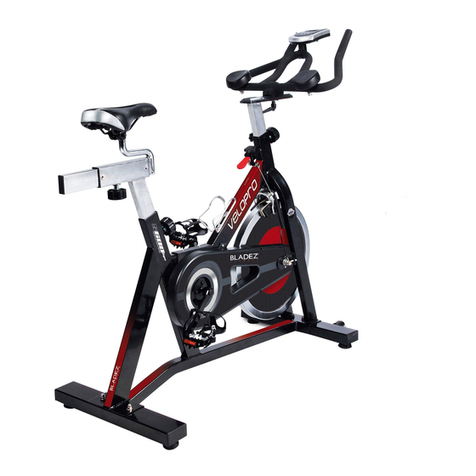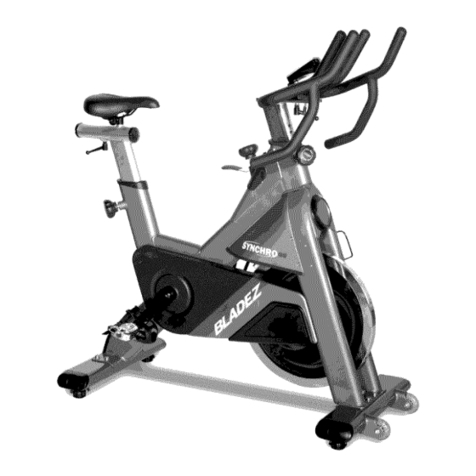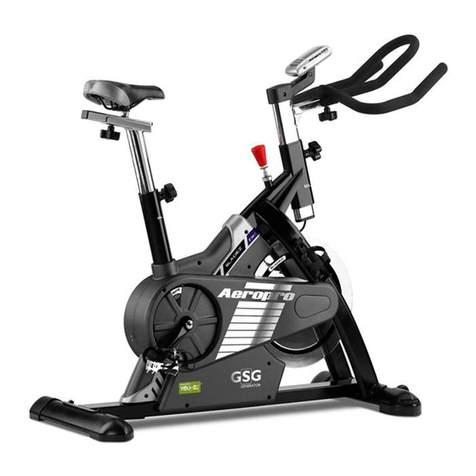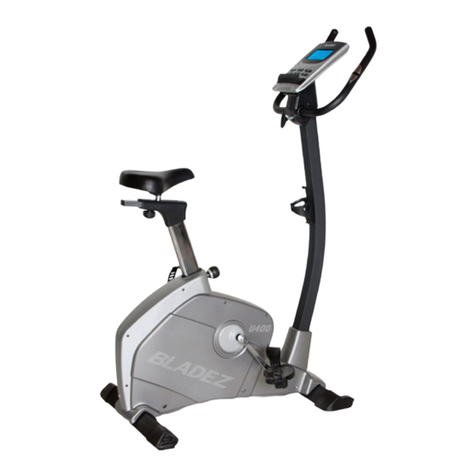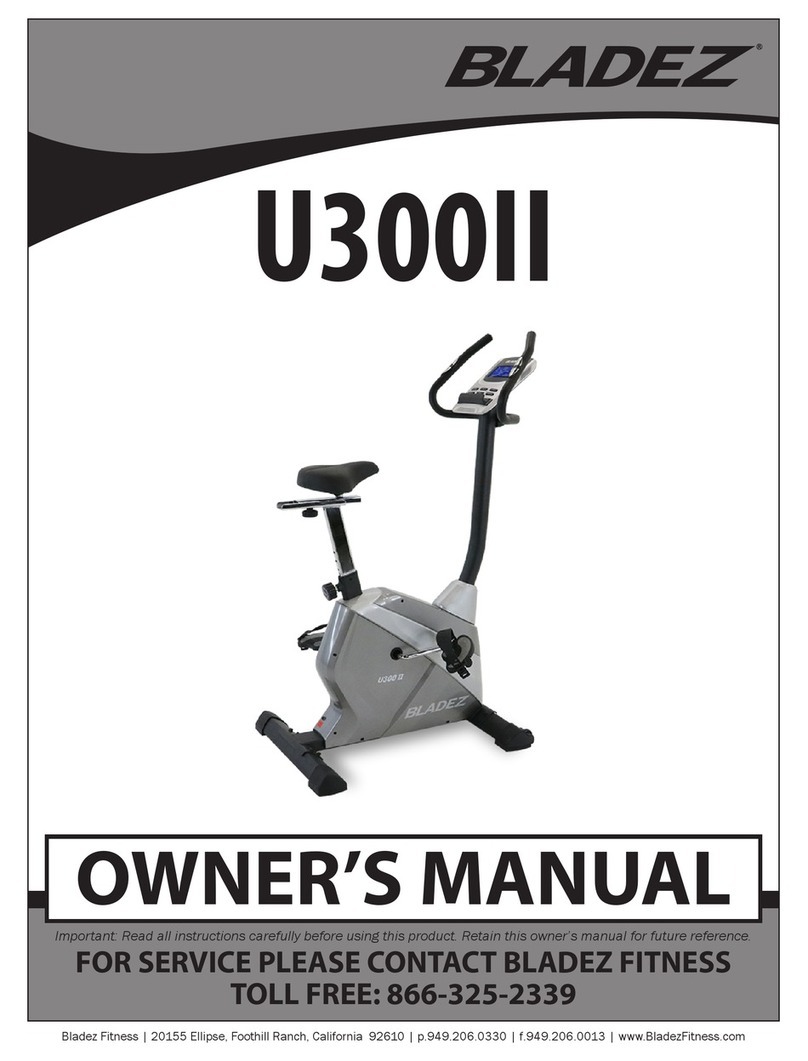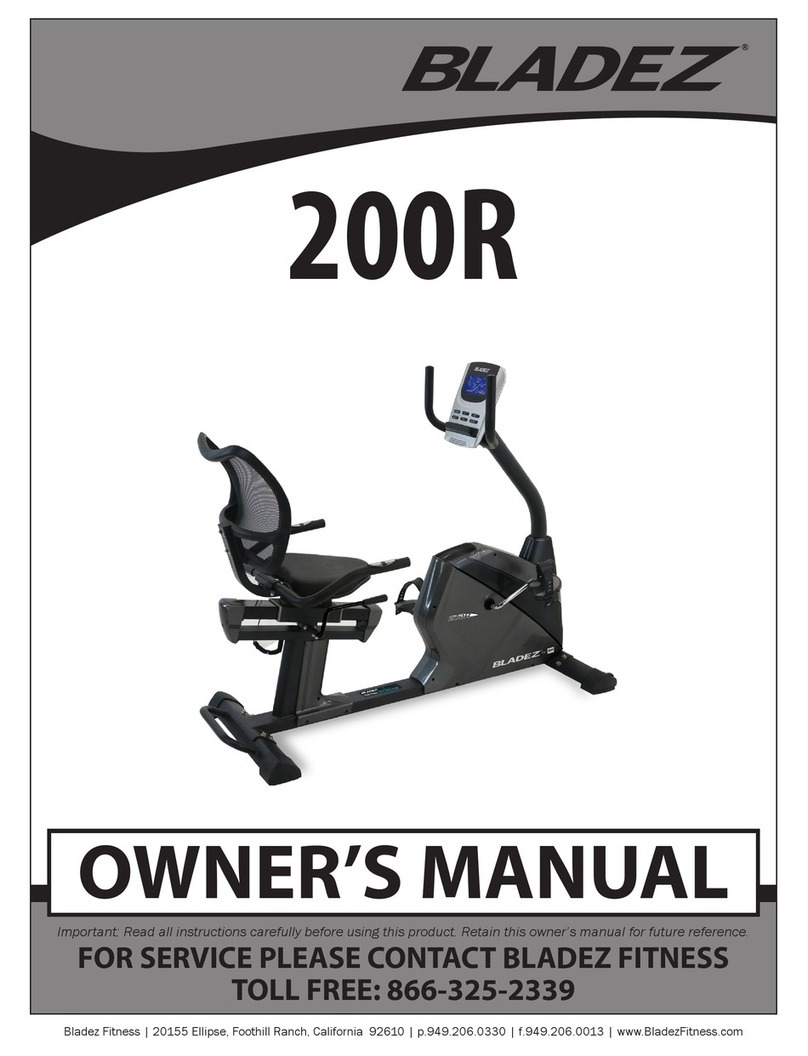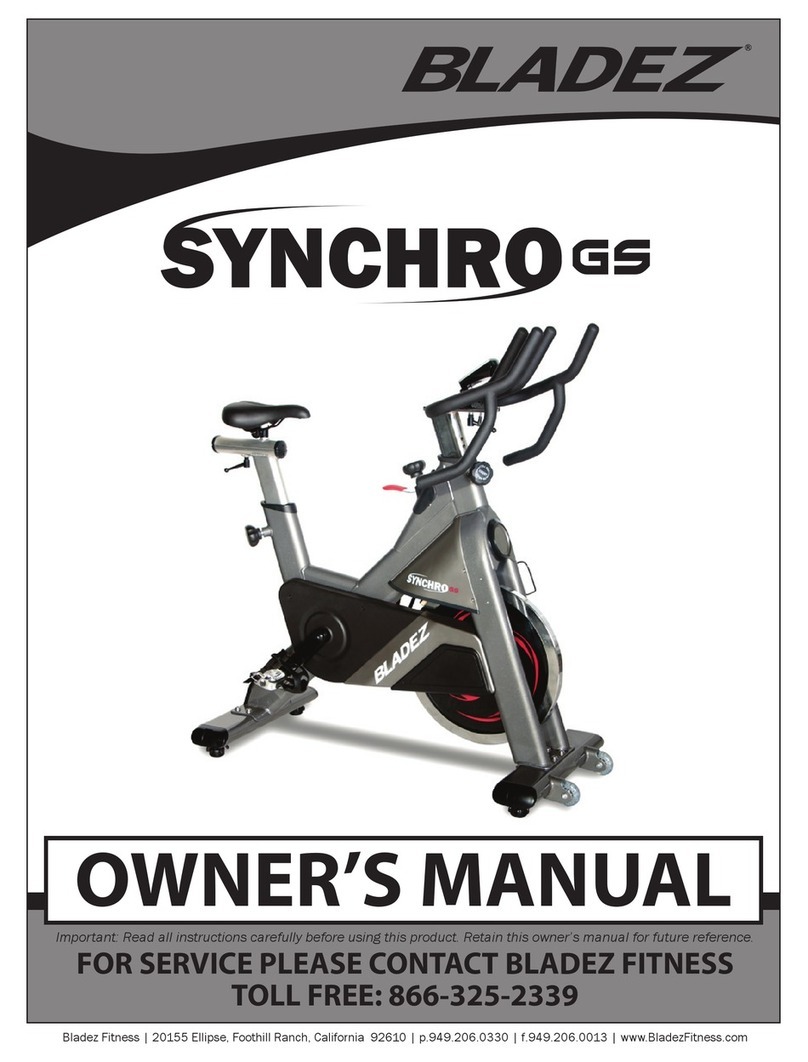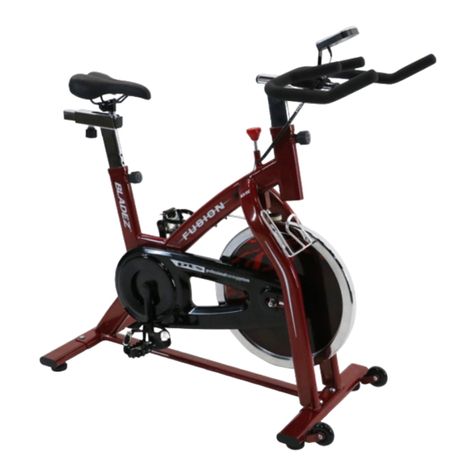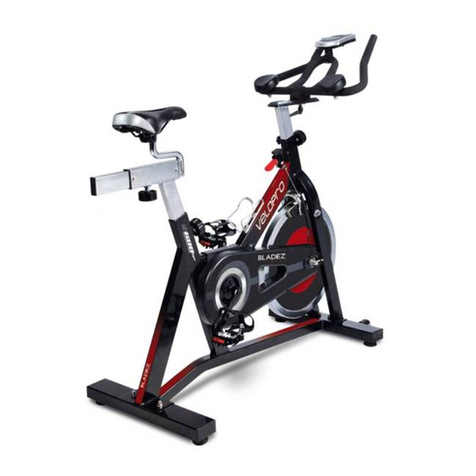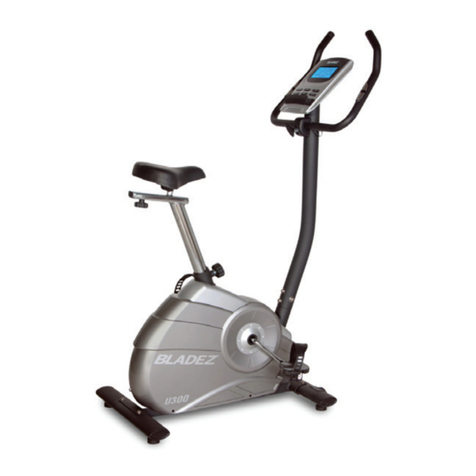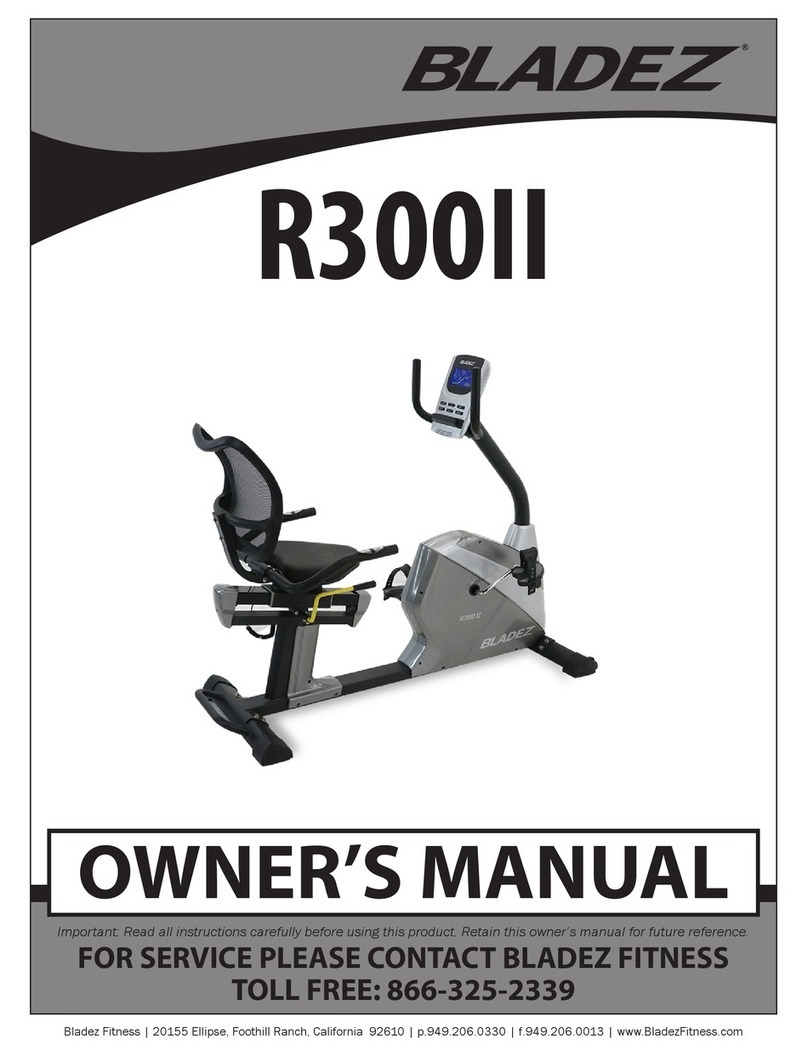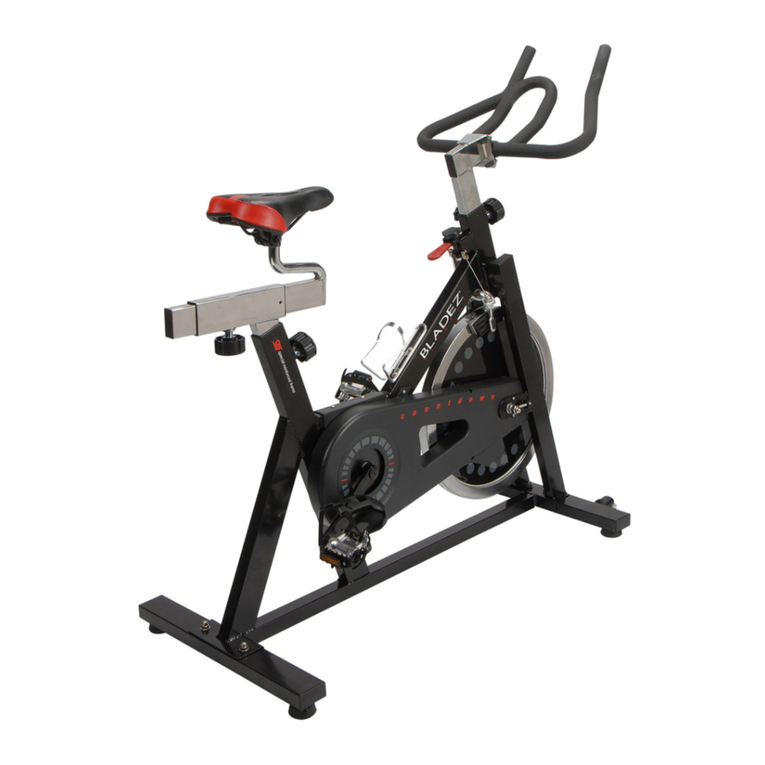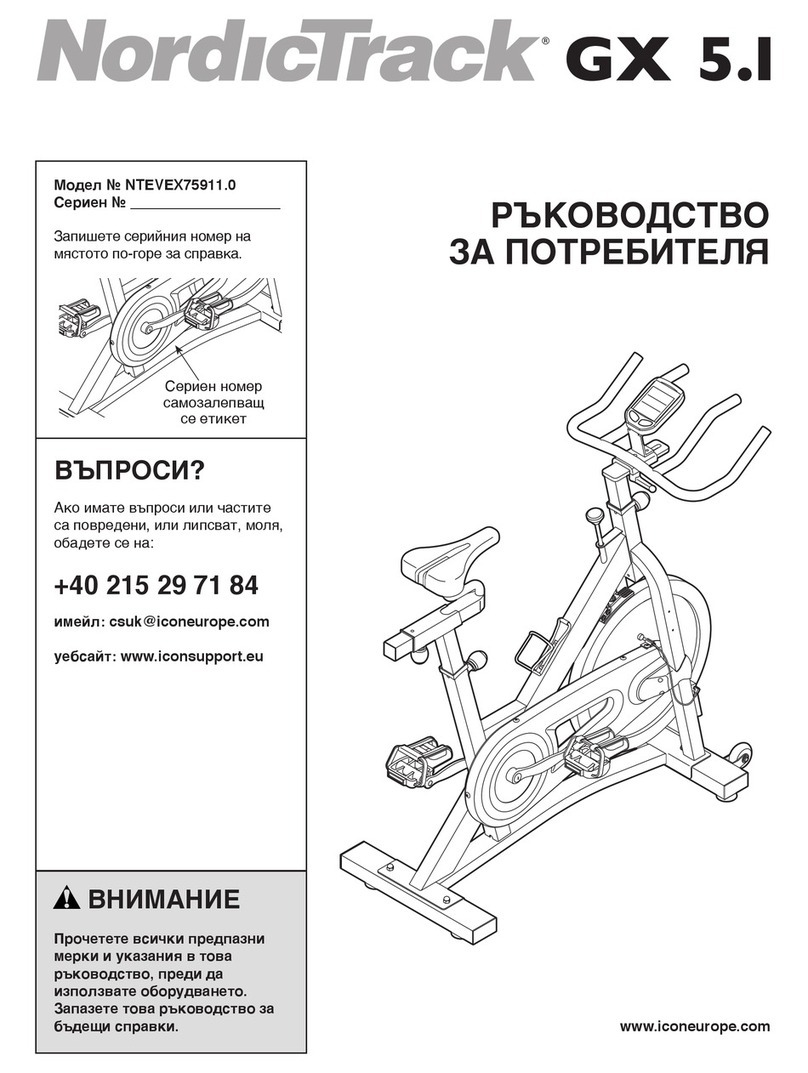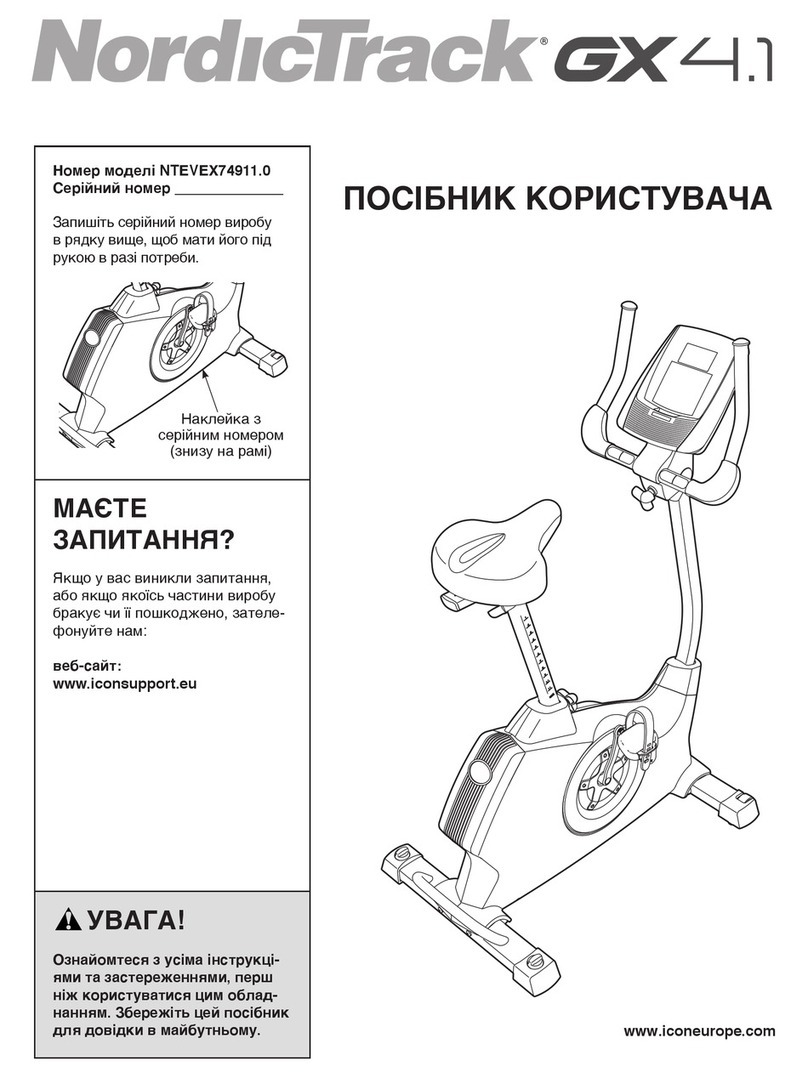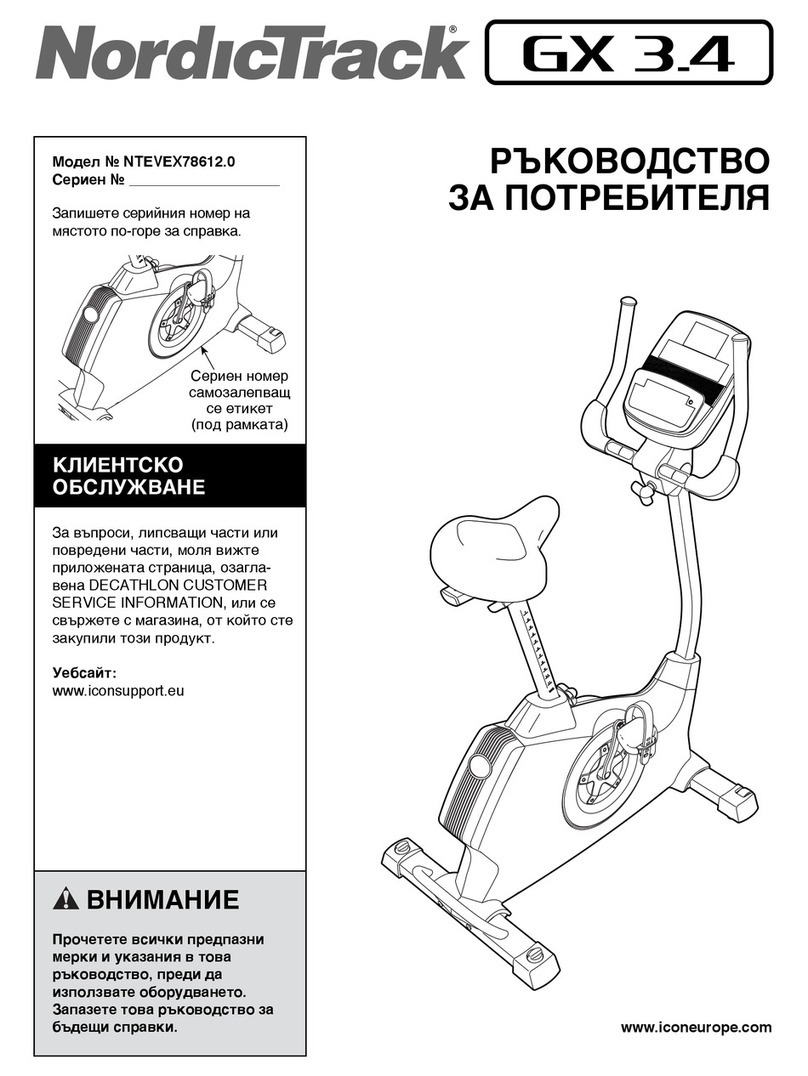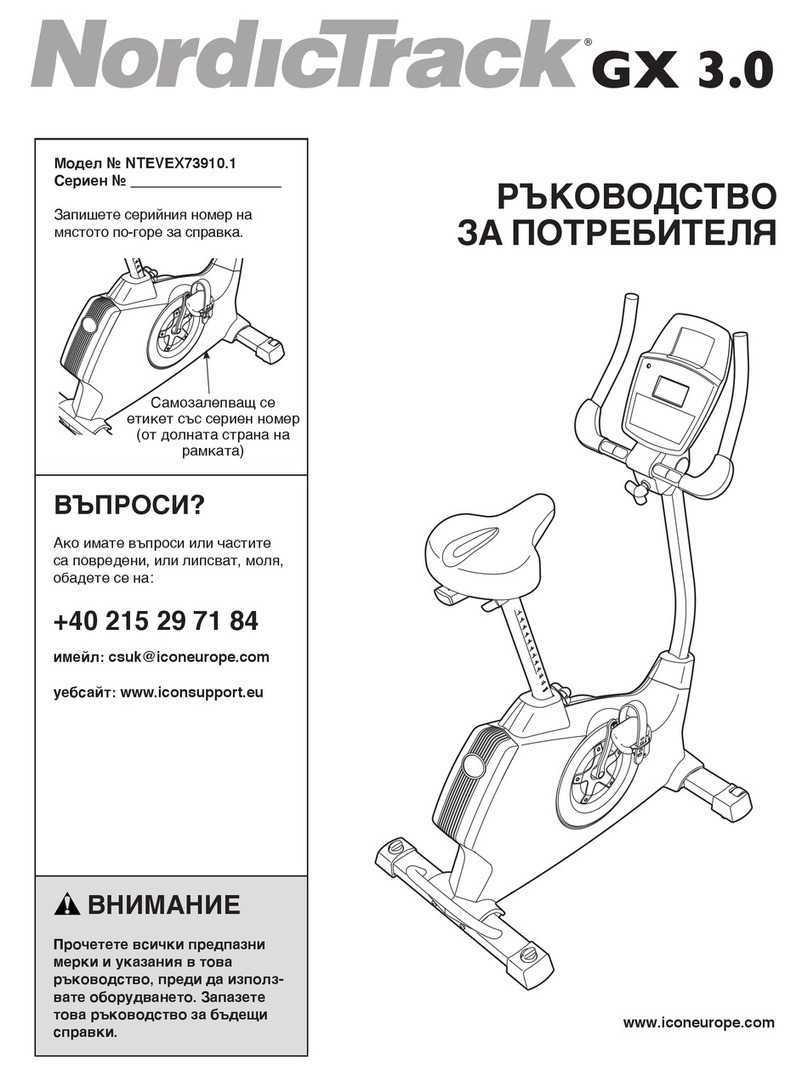
5
SAFETY INFORMATION
PRECAUTIONS
is equipment has been designed and constructed to provide maximum safety.
Nevertheless, certain precautions should be taken when using exercise equipment.
Read the whole manual before assembling and using the machine. Please observe the
following safety precautions:
1. Keep children and pets away from this equipment at all times. DO NOT leave them unsupervised in the room
where the machine is kept.
2. If you experience dizziness, nausea, chest pains or any other symptom while using this machine STOP the
exercise. SEEK IMMEDIATE MEDICAL ATTENTION!
3. Use the machine on a level and solid surface. Adjust the feet for stability.
4. Keep your hands away from any of the joints and moving parts.
5. Wear clothing suitable for doing exercise. Do not wear baggy clothing that might get caught in the machine.
Always wear athletic shoes when using the machine and tie the laces securely.
6. is machine must only be used for the purposes described in this manual. DO NOT use accessories that are not
recommended by Bladez Fitness. Read manual prior to use and follow all warnings and instructions.
7. Do not place sharp objects near the machine.
8. Any person with physical or coordination limitations should not use the machine without the assistance of a
qualied person or doctor. Misuse of this machine may result in serious injury.
9. Do warm-up stretching exercises before using the equipment.
10. Do not use the machine if it is not working correctly.
11. Before using the machine, thoroughly inspect the equipment for proper assembly.
12. Keep a perimeter of 3 feet (1 meter) around the machine before operating the equipment.
13. Use only authorized and trained technicians if a repair is needed.
14. Please follow the advice for correct training, as detailed in the Training Guidelines.
15. Use only the tools provided to assemble this machine.
16. Replace warning labels if damaged, illegible or removed.
17. is machine was designed for a maximum user weight of 220 lbs (100 kgs)
18. e machine can only be used by one person at a time.
19. Before use, inspect the brake strap for signs of wear. If any appear, discontinue use, and contact a service center
for repair.
20. Worn or damaged components shall be replaced immediately or the exercise bicycle removed from service until
the repair is made.
21. is exercise bicycle is for consumer use only.
22. Only manufacturer supplied components shall be used to maintain or repair this equipment.
23. Consult your doctor before beginning use of this machine or any exercise program.
24. Read all instructions before using any exercise equipment.
25. Keep these instructions in a safe location for future use.
Caution: Consult your doctor before beginning to use the machine or any exercise program. Read all
of the instructions before using any exercise equipment.
KEEP THESE INSTRUCTIONS SAFE FOR FUTURE USE.

